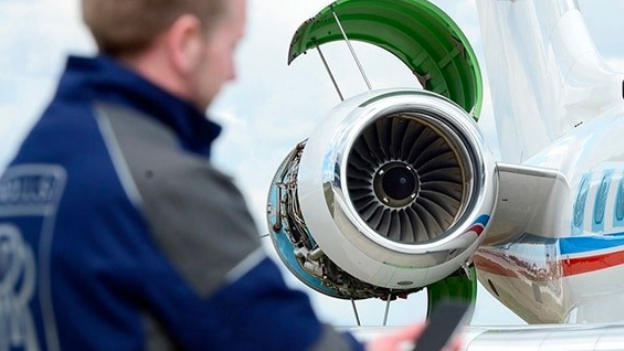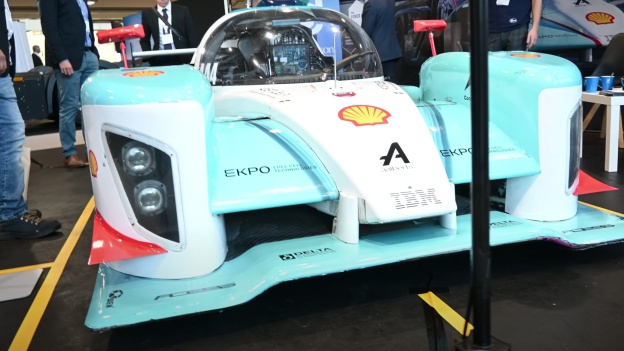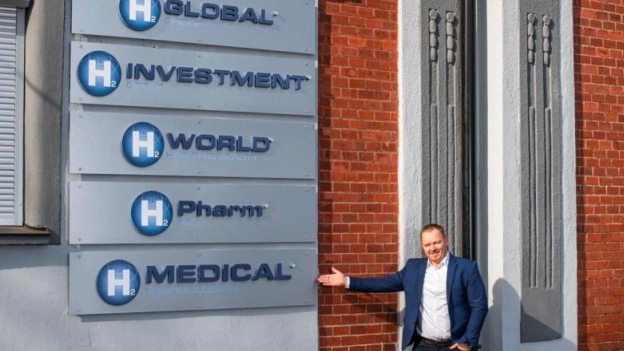The state-owned enterprise DIAMO, which is mitigating the consequences of mining activities, among other things, after the extraction of hard coal, is discussing the use of methane for the production of hydrogen. Diamo is currently negotiating the demonstration and test operation of the first such plant. The production of hydrogen and solid carbon through methane splitting is a possible prospect given the expected future demand for both commodities. An amendment to the energy law in force since January listed hydrogen among the gases that can be distributed through the gas system.
The technology under consideration involves the decomposition of methane to produce hydrogen and solid carbon. This method, which is seen as a promising route to meet future requirements, raises questions about the operational and economic viability of a similar project on a large scale. "It is also necessary to realize and put this technology in the context of the enormous need for electricity for this fission, and the associated considerable area of installed photovoltaic power plants, dealing with the issue of their intermittent power output and so on," explains DIAMO spokesman Tomas Indrei.
According to the spokesman, DIAMO as a state-owned enterprise is actively engaged in the delineation of the Trojanovice mining area for a potential mining site under the Beskydy Mountains and for the exclusive extraction of coal methane. "Without a defined extraction area and other necessary legislative processes, studies and without a proper and detailed examination of the deposit and its reserves, it is premature to consider the extraction and further use of natural gas from this deposit for the time being, however, the idea of hydrogen and pure carbon production here can of course be considered in the future."
The technology is already being tested in Austria
The first domestic plant for the production of hydrogen by electrolysis from methane was recently commissioned in Austria. It was built in the RAG energy valley in Krift near Kremsmünster. With this climate technology, methane (natural gas) will be split into hydrogen and high-purity solid carbon using solar energy, without CO2 emissions. According to the authors, this environmentally friendly innovation will not only provide storable and climate-neutral hydrogen, but also the currently scarce raw material "solid carbon" for agriculture and various industrial applications.

"The idea behind the project is that a carbon compound is decomposed using plasma, which is produced electrically from green electricity. The decomposition results in hydrogen and solid carbon. The pilot project was partly financed from EU funds," said Tadeáš Ochodek, who works as director for cooperation with industry at the Centre for Energy and Environmental Technologies at the University of Mining and Metallurgy - Technical University of Ostrava. It must be said, he said, that hydrogen produced in this way will not have the status of green hydrogen, as it decomposes fossil fuel. "If biofuel in the form of biogas or biomethane were used, the hydrogen could be considered green."
Answers will only come from longer operation
In the case of methane digestion technology, this is a pilot installation, which is mostly unrepeatable due to the high investment requirement. "Only an evaluation of a longer period of operation will provide a comprehensive assessment. When the operation is evaluated, the overall energy intensity of hydrogen production will only be known (the price and location of production are decisive for its application). As for solid carbon, its use in agriculture is not yet permitted by European legislation. It can therefore only be used in industry. Its applicability will depend on its purity and other properties. The answer to this question will also be known after a longer period of operation," added Tadeáš Ochodek. Diamo also expects comprehensive testing of the possible innovative technology in the first place. The outcome of its efforts could influence not only the future of the energy sector, but also the broader debate about the intersection of technology, resource extraction and environmental responsibility.
The preparation of the network is already underway
European Union countries have committed to achieving carbon neutrality by 2050. Regarding hydrogen distribution through pipelines, an amendment to the EU Energy Act allowing hydrogen distribution through pipelines has been in force since January. According to a spokesman for GasNet, preparations have already begun. "Hydrogen is now placed in the same legal framework as natural gas. This is an important milestone from which the preparation of the necessary follow-up legislation will take off. Work will continue on implementing regulations and technical standards specifically for the connection of hydrogen plants and gas quality - as is already the case for biomethane," explains Tomas Pernis.
GasNet currently manages a total of 65,000 kilometres of the gas system in the Czech Republic. "As a distribution company, however, we are also ready to connect and are connecting biomethane plants to our network. GasNet has been investing in the modernisation of its entire gas network for a long time. As a result, we can already handle the distribution of 20% hydrogen admixture in natural gas today. In the future, however, we want to get up to 100% and replace natural gas completely with hydrogen. We are already preparing the connection process for the hydrogen plants. The Energy Act provides for both gas mixtures and pure hydrogen," Pernis adds.
Photo source: DIAMO






























